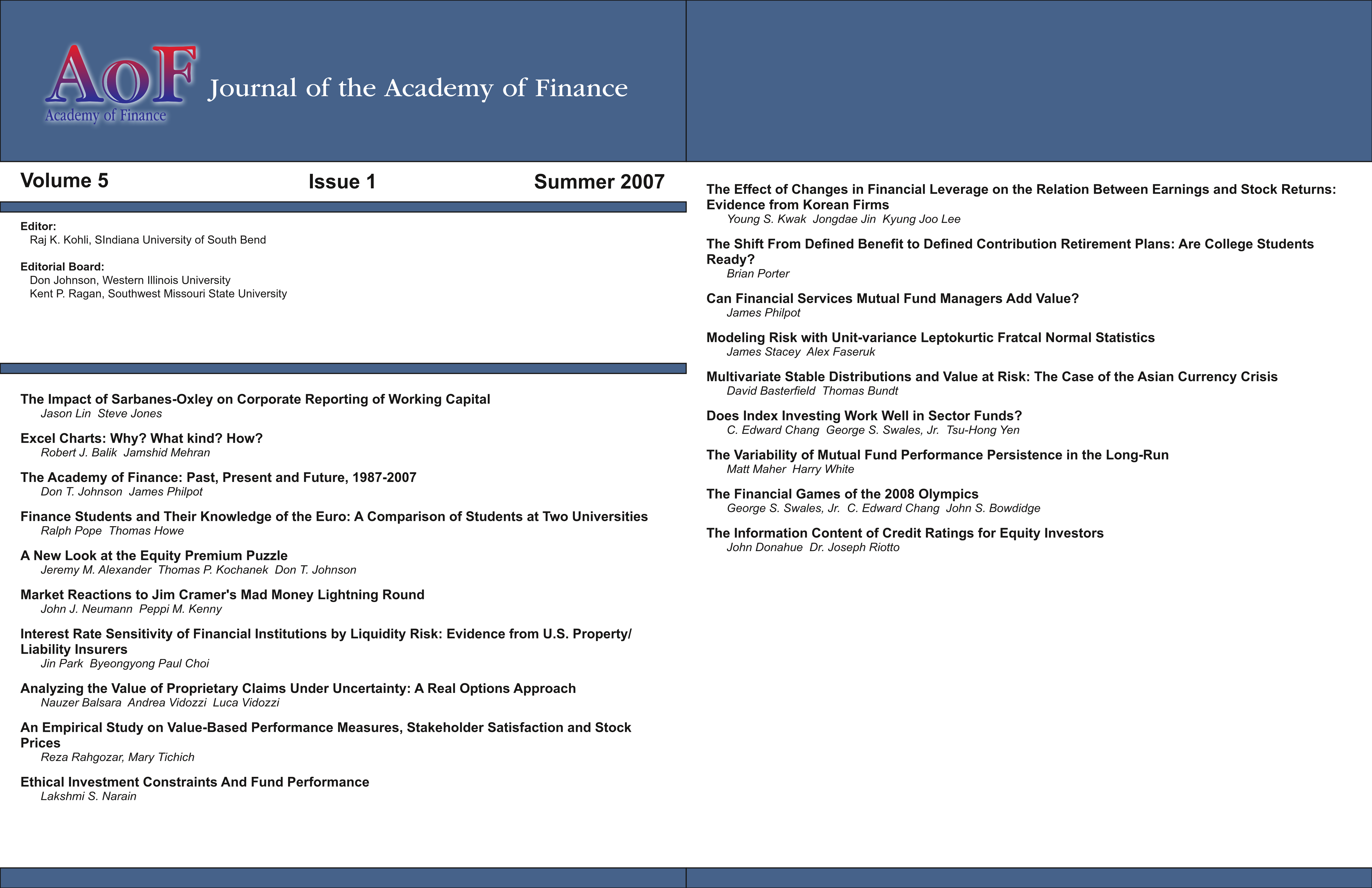Does Index Investing Work Well in Sector Funds?
DOI:
https://doi.org/10.58886/jfi.v5i1.2602Abstract
This abstract was created post-production by the JFI Editorial Board.
The debate on the merits of active and index investing is relatively new for sector investing, unlike the old debate for broad-based size (large-, mid-, or small-cap) or style (value, growth or blend) segments of the market. The new debate for sector investing assumes importance in light of increasing interest in sector investing and a growing number of active and passive investment options. This paper contributes to the debate by examining characteristics, risk and performance measures of all available vehicles for index investing in U.S. sector funds. The authors of this study find sector index funds and sector ETFs have lower expense ratios and lower turnover rates than the average of actively-managed sector mutual funds in their respective category. Pure sector investing is for the active investor and is not a buy-and-hold technique. Unlike their counterparts for broad-based size or style segments of the market, sector index funds have at best performed only as well as the average of actively-managed sector mutual funds with lower risk and comparable return and risk-adjusted return.





